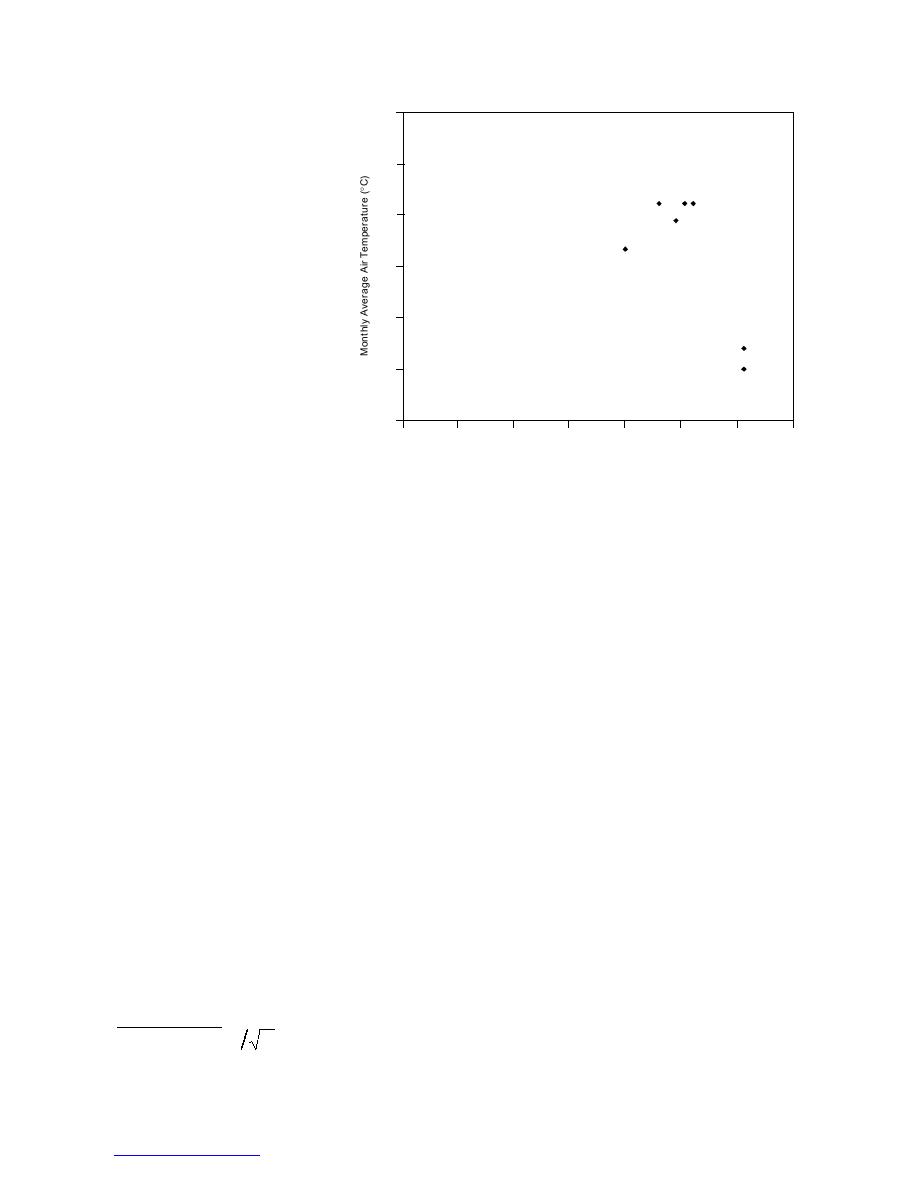
5
time of breakup can affect the
stopping location of an ice run
from upstream. Also, reservoir
0
releases as a result of winter run-
North Platte River,
off events may influence breakup
Wyoming
ice jam occurrence and severity in
International Section
Beauharnois Canal,
5
St. Lawrence River
Quebec
downstream channels. In addi-
Fox River, Illinois
tion, planned releases from river
Allegheny River,
dams and reservoirs can delay or
Pennsylvania
10
accelerate the breakup process in
downstream reaches, depending
on the ice-control objectives.
15
This report describes winter
James Bay, Quebec
flow-control methods chronologi-
cally, starting with the early win-
Jenpeg, Manitoba
20
ter ice-formation period, followed
by the midwinter ice-maintenance
period, and concluding with the
25
0
0.1
0.2
0.3
0.4
0.5
0.6
0.7
l a t e winterearly spring ice-
breakup period. Examples illus-
Average Water Velocity (m/s)
trate flow-control methods and
Figure 1. Monthly average air temperature vs. average water velocity dur-
their ice-control objectives. The
ing flow cutbacks for ice covers formation. Note that the James Bay and
report summarizes the current
state of the art in flow-control
are located south of 45 north.
methods to manage ice and the
conclusions highlight areas where
innovative methods and future research might
1983). Under average early winter air temper-
atures in the northern tier of the U.S., optimal
have the greatest benefit in terms of managing
hydraulic conditions for rapid ice cover formation
river ice.
by juxtaposition are a velocity of about 0.46 m/s
and a Froude number of 0.06 (Perham 1983, Jain
EARLY WINTER
et al. 1993). In colder, more northerly regions, the
ICE-FORMATION PERIOD
optimal ice-formation velocity is somewhat
higher, as shown in Figure 1.
Hydraulic conditions
Velocity alone has been used as an ice-cover-
for ice formation
formation criterion as well. In reaches where
Flow control for ice formation usually requires
water velocities are at or below about 0.11 m/s,
that discharge be reduced at a river structure to
thermally grown sheet ice or border ice would be
promote the rapid growth of a relatively thin,
hydraulically smooth ice cover by ice floe jux-
expected to form rather than a juxtaposed ice
cover. At velocities between about 0.70 and 1.5
taposition. In this dynamic process, frazil pans
m/s, a thicker "shoved'' ice accumulation usually
and ice floes come to rest, edge to edge, at the
forms. In this velocity range, instead of accumu-
upstream border of the ice accumulation with-
lating edge to edge, ice pieces typically under-
out underturning or being entrained underneath
turn at the upstream border of the stationary ice
by the flow. Once a stable ice cover has formed,
discharge can be gradually raised to open-water
cover. Arriving floes may also be entrained by the
levels.
current to deposit on the underside of the accu-
The accepted criteria for ice cover progression
mulation in the form of hanging dams. A shoved
by juxtaposition, based on experience and theory,
ice cover is usually much thicker and hydrauli-
are a maximum water velocity of about 0.70 m/s
cally rougher than a juxtaposed cover, resulting
and a Froude number* of less than 0.1 (Perham
in greater head losses. Also, for the same ice sup-
ply, the shoved cover is shorter, leaving a larger
open water area upstream to produce frazil. These
* Froude number: F = v
gh where v = average water veloc-
factors make the shoved ice cover less desirable
ity; g = acceleration due to gravity; and h = average flow
than a juxtaposed ice cover for hydroelectric
depth.
2
Return to contents pg



 Previous Page
Previous Page
